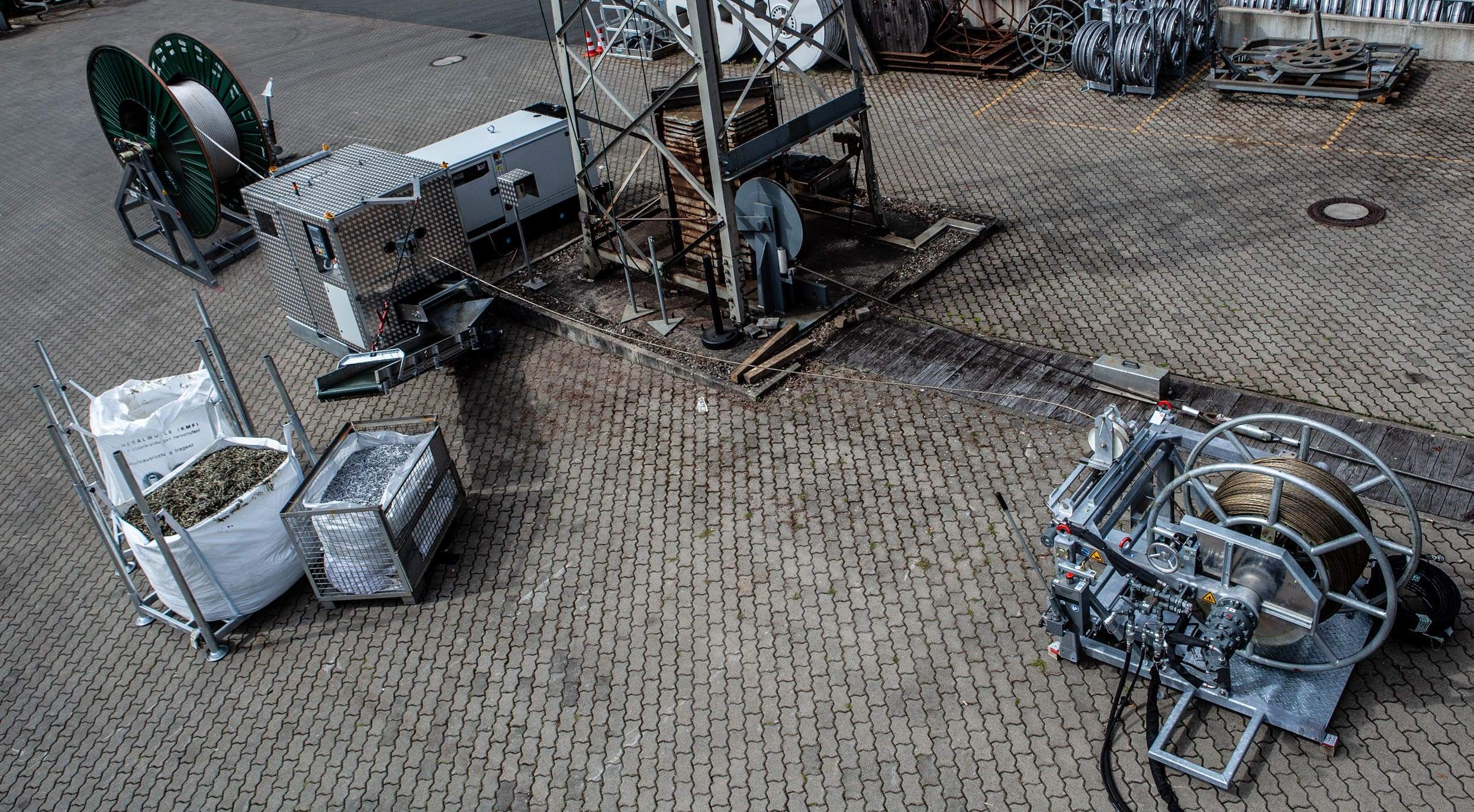
What do power companies do with the old power cable when it gets replaced with new lines? Typically, they wind up the old conductor on split reels, band up the full bundle on the reel, separate the reel, and dump the bundle on the ground. Once the bundle is off, it is put in a dumpster and sold to a Scrap Recycling Company for the aluminum value.
Conductor wire is aluminum on the outside with a steel cable center core. It is very hard for the scrap companies to separate the aluminum from the steel core, then chop it up into Prime Aluminum Scrap size pieces. Since it is so much work to separate, the power company gets very little for their old scrap conductor. This is where the ZECK Aluminum Separator, or the ZAS Aluminum Harvester, comes in!
What is the ZECK Aluminum Separator?
This ZECK (ZAS Harvester) is a compact, 5,200 lb.machine that works behind a puller (Zeck or Condux). The ZECK Aluminum Separator machine does exactly what its title suggests. It separates the aluminum from the steel cable core. It also chops up the separated aluminum into prime size pieces.
How Does it Work?
As previously stated, this piece of equipment is used to separate and cut up the aluminum from old conductor wire. These pieces of aluminum are an ideal size, around 30 – 70 mm each, for this type of scrap. These small aluminum pieces are disposed to the side via a conveyor belt into big bags or containers for a prime aluminum final scrap product. While cutting, the machine uses a winder with a split reel to wind up the steel core for disposal in bundle form. This way, the separation of pure materials can be done during the stringing operation.
This Aluminum Separator can work at speeds up to 4 mph. Pulling power is determined by the puller working in front of the ZAS machine. A typical machine chops the steel and the aluminum together at a max speed of 1.86 mph, and pulling power at max speed is only 3,822 lbs. This slow process produces a contaminated steel and aluminum final product. That chopped material is sent to the scrap buyer, who then must separate the steel from the aluminum. This is difficult, because the conductor is packed with grease, causing the steel and aluminum pieces to stick together. This extra labor to separate lowers the final scrap price.
The ZAS Harvester In Action



